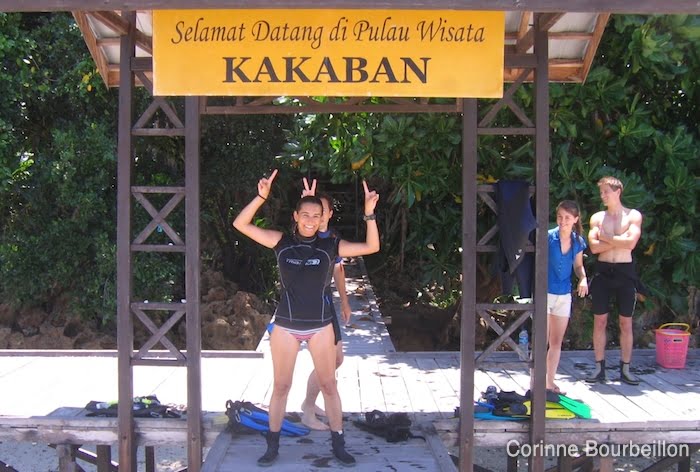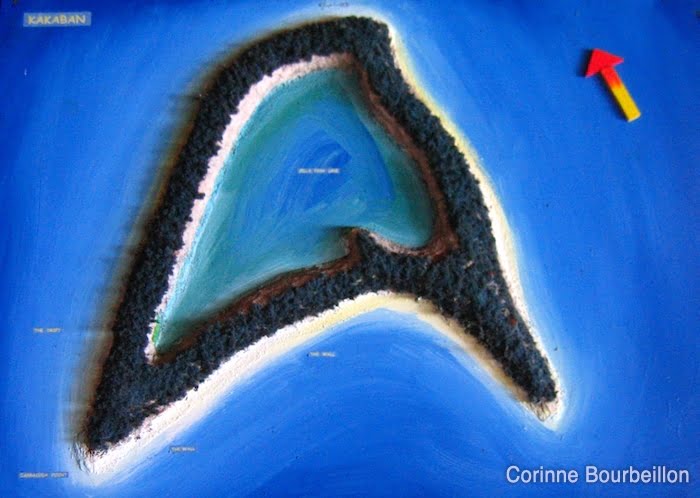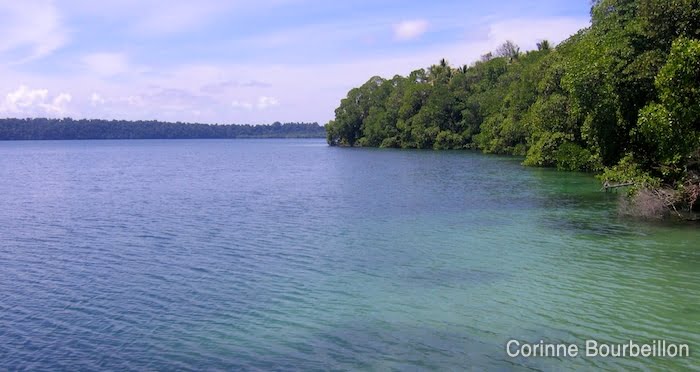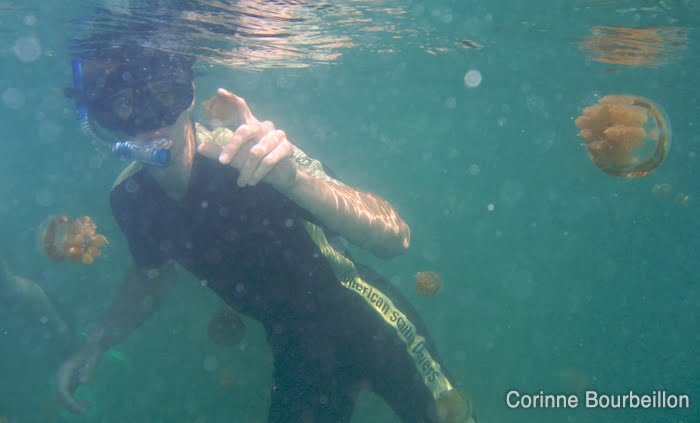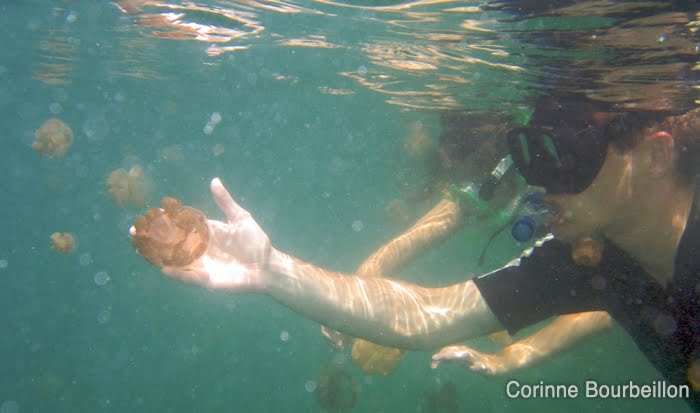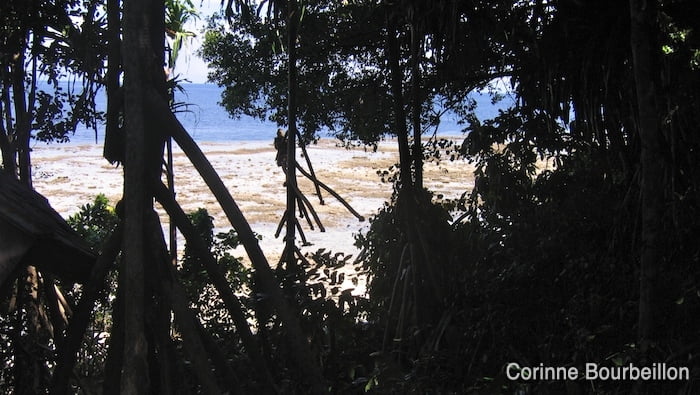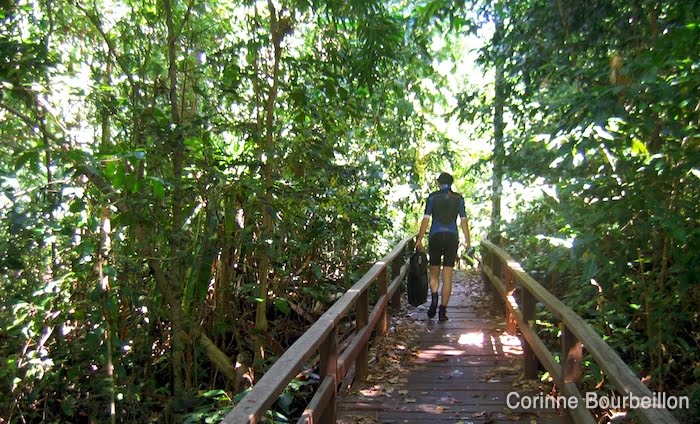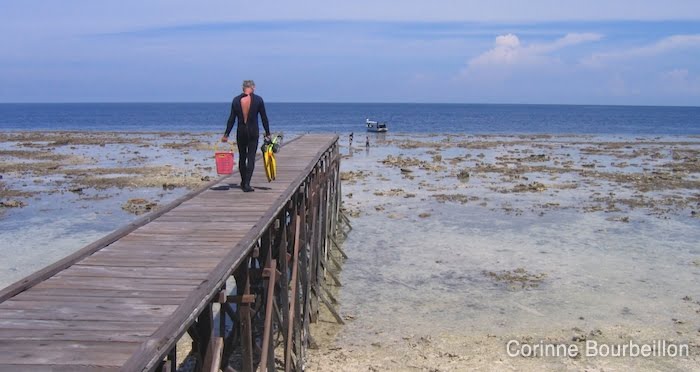Borneo [Malaysia and Indonesia] - July 2009
Dear English-speaking readers, this page is an automatic translation of an article originally written in French. I apologise for any strange sentences and funny mistakes that may have resulted. If you read French, click on the French flag below to access the original, correct text:
It is a deserted island. In its mangrove necklace, it holds the jade water of a huge lake, full of jellyfish... which do not sting! A little walk in video and in pictures in Kakaban...
Welcome to Kakaban
There are only a few places in the world like this. The most famous jellyfish island is Palau, in Micronesia. There are others in the archipelago of Raja Ampat, in West Papua, in Indonesia, less accessible.
And then there's Kakaban, also in Indonesia, on the east coast of Borneo. I'll take you there!
The lake of Kakaban is slightly above sea level and its depth is about 17 meters.
A movement of the earth's crust would have raised the island, more than 10 000 years ago, trapping jellyfish, algae and various other small marine creatures. Finding themselves without predators, the jellyfish have lost, over time, their stinging power.
Videos: swimming with jellyfish
It is one thing to know that jellyfish do not sting. It is another to slip into this warm, greenish and brackish water, and to verify by oneself that the famous jellyfish are indeed harmless...
Dive into the atmosphere with the video below:
UPDATE. I returned to Kakaban in 2013four years after the little expedition I'm talking about here, during a new trip to Borneo. The island of Kakaban is much more frequented than before. From now on, it is forbidden to wear flippers, in order not to hurt the jellyfish. It is also better not to touch the jellyfish as we used to do... Of course, they do not sting, but we are the ones who risk to harm them by force, if all the visitors who come in number from now on have fun to do the same... It is a fragile ecosystem and the exponential number of tourists who come to bathe in the lake risks to weaken it even more. In short, I should not have filmed or shown this gesture. Mea culpa. I made a small video again in 2013 (with my SLR acquired in 2010, the Canon Eos 7DI took a few pictures of my first trip, with a much better rendering than with my little compact) and made a similar editing, for the wink of an eye with my first trip. I let you discover it below :
Below are the links to my new posts for 2013 on Kakaban :
 There would be three to four different species of jellyfish in the lake. We have only spotted two of them. The small brown ones, the most numerous, that we see in the video, and some others a little bit bigger, white and translucent.
There would be three to four different species of jellyfish in the lake. We have only spotted two of them. The small brown ones, the most numerous, that we see in the video, and some others a little bit bigger, white and translucent.
It's a funny thing to immerse oneself in this jellyfish soup... After the first apprehension, where one only dares to touch these funny jellyfish with the tip of one's finger, one finally dares to approach one's face, to look at them more closely.
The more we move away from the pontoon, the more there are. It's amazing!
It looks like small translucent hearts beating, mini-planets immersed in a cosmic soup.
Indifferent to our presence and our clumsy splashes, they are running in all directions, swimming obstinately, most often sideways or upside down. Because of the sun, the heat? Mystery.
In any case, my underwater housing does not stand the heat of the rays in the icy water. After a few images, the interior is covered with mist.
I have to stop the images and I am satisfied to enjoy the show with my eyes, which is not worse...
Access to the lake
The access to the lake itself is relatively easy, contrary to what I had feared from the accounts of those who preceded me here, a few years ago, such as Yann and Marie Ange.
The place has surely been developed since then. There is now a long wooden footbridge which crosses the small piece of jungle and mangrove separating the sea from the lake. In five minutes, we are there!
The most difficult part of the trip is actually to get to the island from the boat, or back. We were a small group of eight, not all equipped with booties or sandals to walk without cutting ourselves on the dead coral beach.
Becky, the young Englishwoman, had only flip-flops and her flippers (which you put on barefoot). But she was lucky to have a real gentleman for a boyfriend: Paul carried her on his back to cross the dangerous shore!
We arrived at very low tide, and even with proper footwear, it is not easy to move forward in the shallow water, trying not to damage the branches of living coral, without tripping over the dead debris that rolls under the sole.
Fortunately, no sore to regret this time ... And this strange and fascinating lake deserves some effort. With the mantas of SangalakiIt was the other "curiosity" of the area that I absolutely wanted to see.
However, as I was coming to the end of my stay, and I had to spend two days in the dry in Derawan, because of my stingray stingWe had planned to go there the day before, in fact. But a big storm, with heavy rain and stormy sea, forced us to postpone our little expedition.
I anxiously watched for the next dawn... Fortunately, the sky remained clear! And we were able to embark as planned, in an old wooden boat with a slow engine.
After the lunch break on the pontoon and the amazing visit to the jellyfish, we went back to the boat, for our second dive of the day on the Kakaban reef... But I will come back to tell you about my dives in the Derawan archipelago in a few days.
😎


